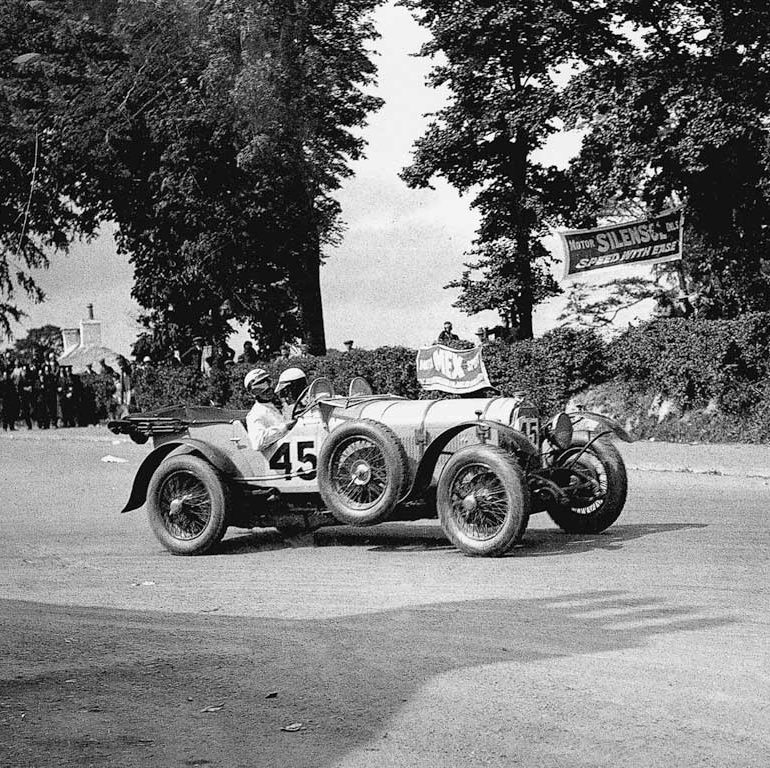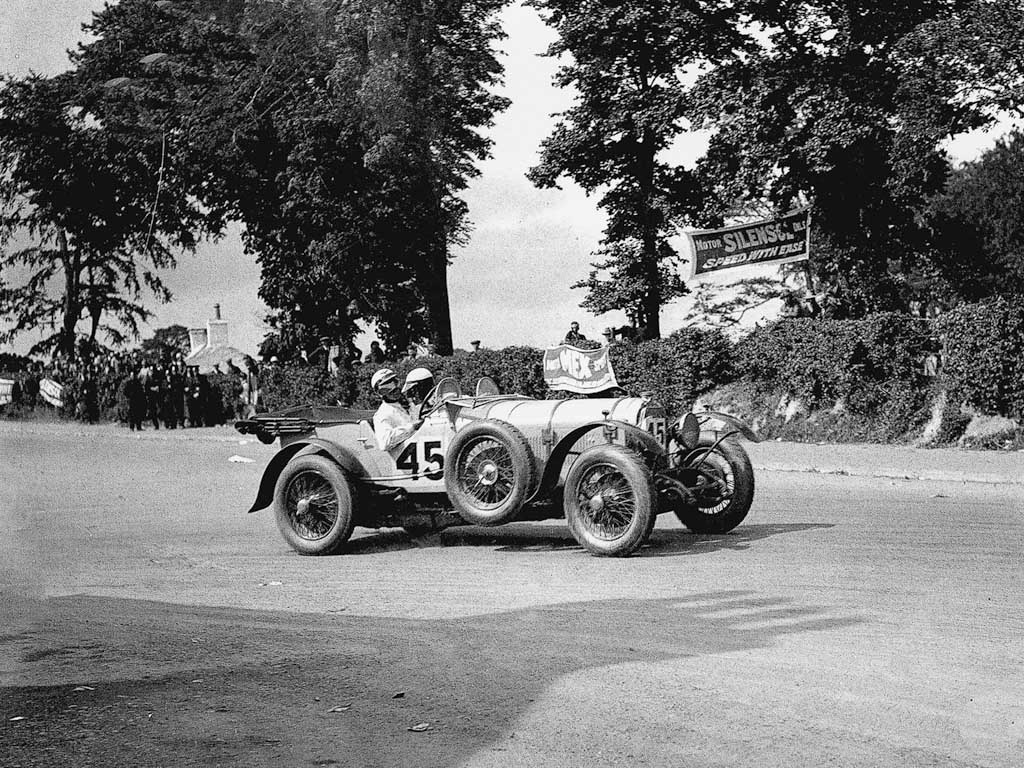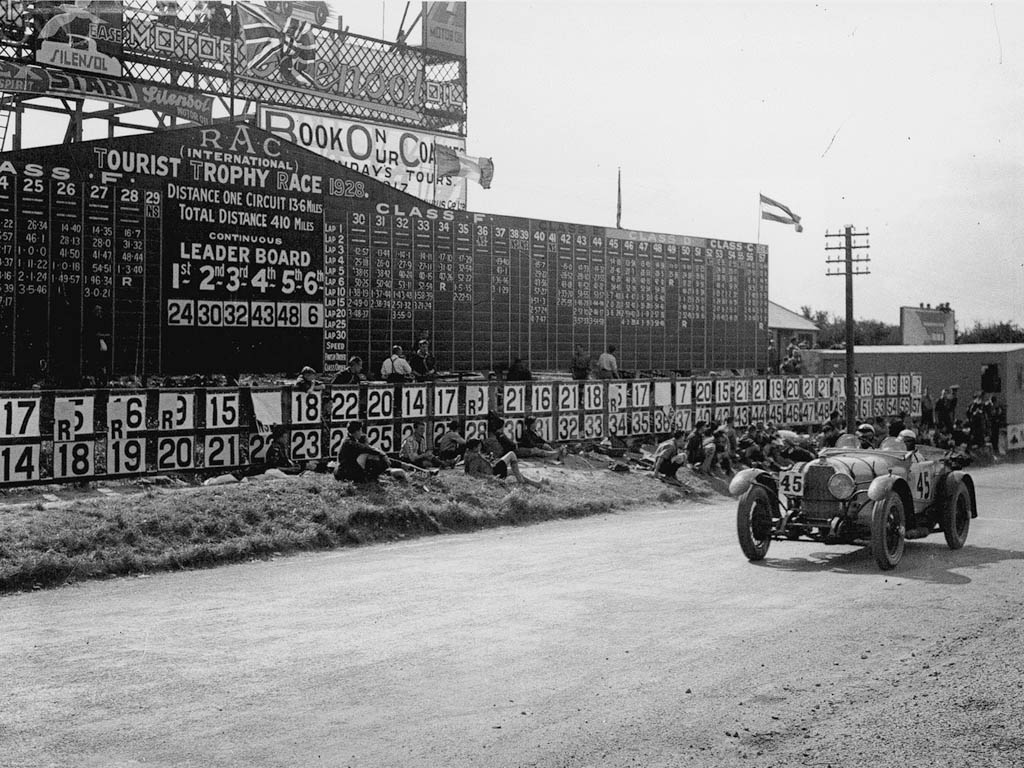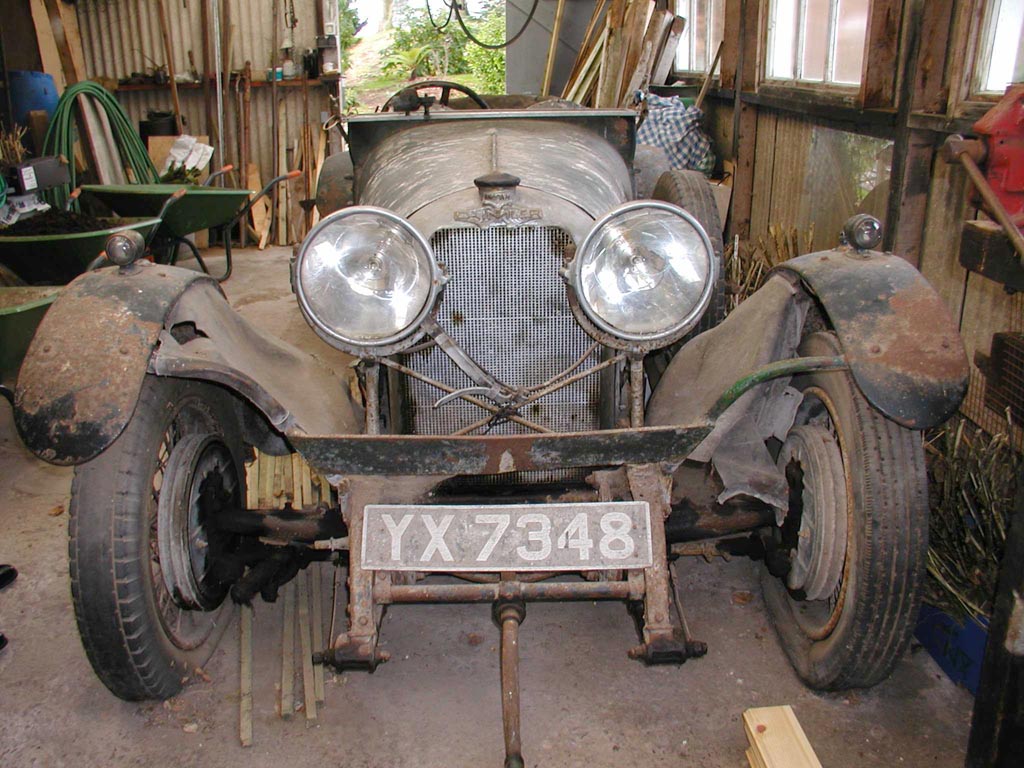1927 Austro Daimler ADM 19/100
Austro-Daimler began as a satellite branch of the German Daimler company located in Wiener-Neustadt Austria. Cheif designer was Paul Daimler, son of Gottlieb Daimler, who hired Ferdinand Porsche in 1905. From that period, through into the twenties, many outstanding cars were made with noted achievements in the Prince Henry Trials and also in the early Alpine Trial events.
Christies on the ADM
In a post-war period, production was resumed and the first production models of the ADM19/100 began to show their prowess in the various Continental hill-climb events in the early 1920s. The design owed much to the genius of the great Ferdinand Porsche. Mechanically the 19/100 disported a workmanlike, but well-engineered straight-six engine configuration, but beneath its purposeful somewhat plain exterior were incorporated a gear-driven overhead camshaft with its vertical shaft concealed at the rear of the aluminium cylinder block with a take-off point ahead of the flywheel, which itself incorporated an ingenious crankshaft damping device. Cast-iron liners were inserted in the block and the use of tubular duralumin con-rods, following aircraft engine design principles was a notable feature, allied to the well-balanced crankshaft.
The chassis design allowed a marvellously low centre of gravity with the engine set well down into the frame, and the beautifully crafted front axle allowed for a low frontal area despite the large radiator surface area which provided effective cooling. The whole concept provided an excellent platform for a very sporting motor car – light, yet with plenty of power and a good torque-range. In standard form the 4-seater versions were quoted as good for 100mph, which when compared to the standard Bentley, gave them nearly 20mph advantage – and had far better road-holding and brakes as well.
On the continent, both Ferdinand Porsche and Alfred Neubauer in particular made notable successes with lightened two seater versions of these cars in a brief spell of competition activity, prior to becoming more famous respectively in their differing ways within Motor Racing spheres of influence.
1928 Tourist Trophy
After an absence of 6 years, the revival of the Tourist Trophy race, last held in the Isle of Man in 1922, was announced in 1928, to be run at a new road-course venue at Newtownards just outside Belfast in Northern Ireland. This news was received with great enthusiasm and attracted enormous interest from manufacturers and independent teams alike. The event was open to production standard sports and touring cars in full road-equipped configuration, and as at Le Mans, the cars would have to start the race with the hoods up, and carry a mechanic or co-driver for the full distance. Austro-Daimler, through their London offices, assembled a team of three cars to be driven by Lesley Callingham, Cyril Paul and Hugh Mason.
In the interests of identification, of the three team cars two were already road-registered in 1927 with the numbers YT 4399 and YT1856, and these two were co-driven by Cyril Paul & J. Taylor, and H. Mason & AN Other. Their race numbers were 46 & 47 respectively. The third car wore race number 45 and was driven by Leslie Callingham & Luther, and has been identified in archive photos as being unregistered, but being driven on ‘trade-plates’ at the time of the event. (It was registered YX 7348 in London on 28th August 1928, some time after the event). For the race itself, the cars were somewhat unfancied, as opposed to the teams from Alvis, Bentley, Talbot, Alfa, Romeo, Riley, Lea Francis, and Austin: as well as individual entries of Mercedes and Bugattis, all of whom seemed much more recognisable as potential winners to the ‘informed’ race-going public and bookies alike.
It was that the more fancied faster runners fell by the wayside, and the rugged but lighter weight Austro-Daimlers steadily picked up places through sheer reliability, and road-holding. The race was run under a handicapping system where credit laps were given to the smaller-engined classes. This proved most effective and fair, and as proven by the results the spoils were evenly distributed. However, some competitors fell by the wayside for various reasons with mechanical failures, and not unnaturally, accidental mishaps. At the end of the race the only team still running all their original starters at the fall of the flag were the Austro-Daimlers, recording highly creditable overall positions of 3rd , 4th , and 10th finishing in the reverse order of their start numbers 47, 46 & 45, and thereby winning the coveted Team Prize outright.
Christies sale of #11026
At their sale in the Jack Barclay Showroom, London 29th March 2004, Chrisites auctioned chassis #11026 one of the three surviving Austro-Daimlers from the 1928 Tourist Trophy. The car was a barn discovery, which was unused 50 years during a single family ownership since 1935.
Amazingly enough, despite appearances, the engine and mechanical components have been oiled an greased periodically as a precaution against terminal seizure, with the result that the engine still turns and is free, and the car can be rolled along. Over its period of half a century in hibernation its whereabouts have been known to certain keen motoring sleuths, but it has never been for sale in over 70 years. In general condition it appears remarkably sound and original still retaining its light-weight aluminium racing seats to the front and with the original leather still fairly intact. Instrumentation is nearly complete, however the clock and laptimer have for some reason.
During the auction, the car exceeded all expectations. Initially estimated at 70 000 to 90 000 GBP, the car sold at a colossal 362 750 British pounds. No doubt the value comes the originality of this important car.
Story by Christie’s Inc. and Supercars.net
In Detail
| submitted by | Richard Owen |
| engine | Inline-6 |
| position | Front Longitudinal |
| valvetrain | SOHC |
| displacement | 2994 cc / 182.7 in³ |
| driven wheels | RWD |
| front brakes | Drums |
| f brake size | mm / in |
| rear brakes | Drums |
| r brake size | mm / in |
| f suspension | Semi-Elliptical Leaf Springs w/Friction Shock Absorbers |
| r suspension | Semi-Elliptical Leaf Springs w/Friction Shock Absorbers |
| transmission | 4-Speed Manual |
| gear ratios | :1 |
| top speed | ~160.9 kph / 100.0 mph |







